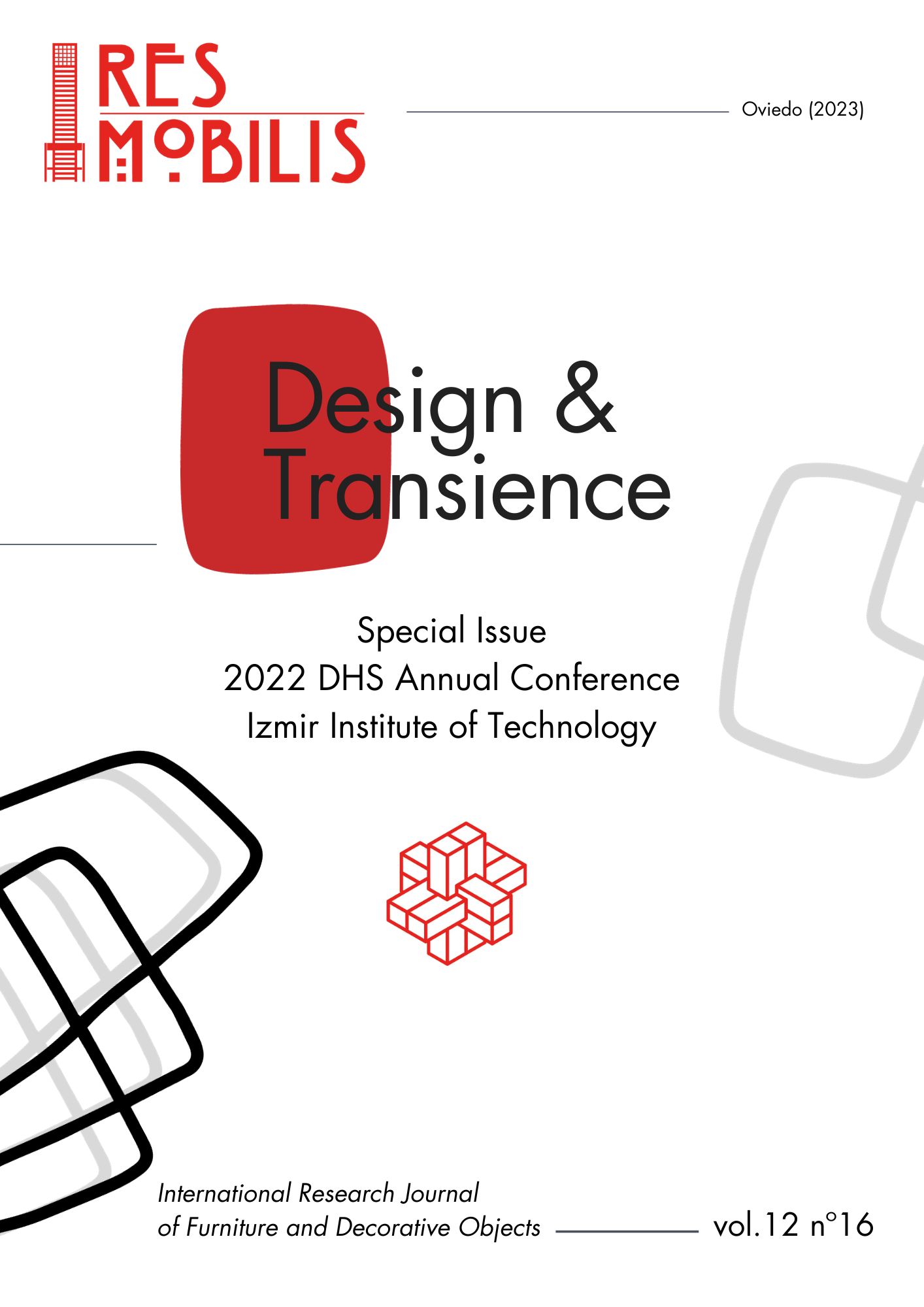Resumen
In 1975, when the Khmer Rouge seized power, the National Museum of Cambodia, under the care of director Ly Vou Ong, was closed with its collections abandoned. Upon the museum’s reopening in 1979 in the aftermath of the dictatorship, only seventy-three silk textiles and a costume collection of about thirty pieces were recovered. Three-quarters of this collection had disappeared due to environmental issues and looting. Most of the pre-1975 staff had died, resulting in a significant loss of knowledge about the museum’s history and objects.
Due to the lack of comprehensive photographic records for each piece and the unstable inherent qualities of textiles (portable, fragile, easy to hide and copy), it appears nearly impossible to track the looted objects in other museums or private collections. However, catalogues, inventories and sets of datasheets pre-dating 1970 provide substantial evidence of these pieces and their acquisition. This paper argues that in addition to studying and preserving what was salvaged, examining missing artefacts through archival and photographic evidence sheds a more comprehensive light on the value and specificity of the museum’s textile heritage formed through successive curatorial teams from the 1920s to the late 1960s. This research especially explores the importance of paper records as invaluable data to bring new meanings about the history of the collection, as well as physical objects. Through their tactile, textual quality, they act as placeholders in which are inscribed the curator’s choices and the textiles’ material memory. Focusing on the transience of this textile collection opens theoretical and methodological ways to materialise the rich diversity of textile craftsmanship pre-1970 (motifs, styles, techniques) and critically examine further the destructive nature of the Khmer Rouge regime and civil war.
Citas
Abbe, Gabrielle. “Le développement des arts au Cambodge à l’époque coloniale : Georges Groslier et l’école des arts cambodgiens (1917-1945).” UDAYA, Journal of Khmer Studies 12 (2014): 7-39.
Atnashev, Vadim. “The Cham of Cambodia as a Divided People: From Refuge to Genocide.” In Proceedings of Topical Issues in International Political Geography, edited by Radomir Bolgov et al., 451-58. Cham: Springer et al., 2023.
Australian War Memorial. “Meas Khim, an employee of the National Museum of Cambodia.” Accessed January 10, 2023. https://www.awm.gov.au/collection/C958320.
Clémentin-Ojha, Catherine and Pierre-Yves Manguin. A Century in Asia: The History of the Ecole Française d’Extrême Orient, 1898-2006. Singapore: Editions Didier Millet, 2007.
Cole French, Lindsay. “Enduring Holocaust, surviving history: Displaced Cambodians on the Thai-Cambodian border, 1989-1991.” PhD diss., Harvard University, 1994.
Dauge, Véronique. “Post-war recovery in Cambodia.” Museum Management and Curatorship, Vol. 16: 2 (1997): 164-172.
Dean, John F. “The Preservation of Books and Manuscripts in Cambodia.” The American archivist 53, no. 2 (1990): 282–297.
Dupaigne, Bernard. “Un village de “Javanais des origines”, Prek Reaing.” Bulletin de l’AEFEK no. 22, December 2017. Accessed January 22, 2023. https://www.aefek.fr/baefek22.html.
Falser, Michael, ed. Cultural Heritage as Civilizing Mission: From Decay to Recovery. New York: Springer, 2015.
Falser, Michael. Angkor Wat – A Transcultural History of Heritage: Volume 1: Angkor in France. Berlin: De Gruyter, 2020.
Fitzgerald, Tricia. “As Cambodians work on restoring their way of life….” UPI Archives, May 3, 1995. Accessed August 2, 2022. https://www.upi.com/Archives/1995/05/03/As-Cambodians-work-on-restoring-their-way-of-life/7616799473600/.
Genovese, Lia. “The Birth of French Research into the Prehistory of Laos.” In Engaging Asia: Essays on Laos and Beyond in Honour of Martin Stuart-Fox, edited by Desley Goldston, 91-122. Copenhagen: NIAS Press.
Green, Gillian. Pictorial Cambodian Textiles. Bangkok: River Books, 2008.
Groslier, Georges. “La reprise des arts khmers.” La Revue de Paris, t. 6 (Nov-Dec. 1925): 395-422.
Groslier, George. “Les collections khmères du musée Albert Sarraut à Phnom.Penh.” Ars Asiatica 16 (1931): 1-126.
Hallam, Elizabeth and Jenny Hockey. Death, Memory and Material Culture. London: Routledge, 2001.
Kamm, Harry. Cambodia: Report from a Stricken Land. New York: Arcade Publishing, 2011.
Lafont, Masha. Pillaging Cambodia: The Illicit Traffic in Khmer Art. Jefferson, NC: McFarland & Company Inc., 2004.
Lester, Peter. “Of Mind and Matter: The Archive as Object.” Archives and Records 39, 1 (2018): 73–87.
Maynard, Margaret. Dressed in Time: A World View. London: Bloomsbury Publishing USA, 2022.
Millikan, Catherine. “Conservation in Cambodia.” Paper presented at the ICOM-ASPAC Regional Assembly, “Museums and Cross-Cultural Understanding.” Sydney, Australia: September 1993.
Mills, Sarah. “Cultural–Historical Geographies of the Archive: Fragments, Objects and Ghosts.” Geography Compass 7, no. 10 (2013): 701-713.
Muan, Ingrid. Citing Angkor: The “Cambodian Arts” in the Age of Restoration 1918-2000. Unpublished PhD thesis, Columbia University, 2001.
Musa, Mohamad Zain Bin. “Malay and Cham Relations with the Kingdom of Cambodia during and after the French Protectorate period (1863-2000).” Journal of the Malaysian Branch of the Royal Asiatic Society 74, no. 2 (281) (2001): 1–21.
Porée-Maspero, Evelyne. Étude sur les rites agraires des cambodgiens Vol. 2. Mouton et Cie: Ecole pratique des Hautes Etudes, Paris: 1964.
“Pnom Penh Seeks to Save Statues,” The New York Times, February 21, 1971.
Sheares, Constance. “Ikat Patterns from Kampuchea: Stylistic Influences.” Heritage, no. 7 (1980): 45–53.
Stock, Emiko. “Au-delà des Ethnonymes. À Propos de Quelques Exonymes et Endonymes chez les Musulmans du Cambodge.” Moussons 20, no. 20 (2012): 141–160.
Thiemann, Stefan. “How Can Research on Written Artefacts Benefit from Collaboration with Computer Science?” In Exploring Written Artefacts Objects, Methods, and Concepts, Studies in Manuscript Cultures 25, edited by Jörg B. Quenzer and Michael Friedrich, 267-280. Berlin: De Gruyter, 2021.
Samen, Khun, and Hab Touch. “Textiles in the Collection of the National Museum of Cambodia.” Proceedings IKTT Seminar “Hol, the Art of Cambodian Textile,” Siem Reap, Cambodia, December 12-13, 2003, Institute for Khmer Traditional Textiles. Accessed January 12, 2023. http://iktt.esprit-libre.org/en/2004/09/abstract_part_2_textiles_in_th.html.
Sontag, Susan. “On Photography.” In Communication in History: Technology, Culture, Society 4th edition, edited by David Crowley and Paul Heyer, 166-170. Routledge: New York, 2015.
Fujihara, Sadao, “The Exchange of Art between Japan and French Indochina during World War II: The Origins of the Khmer Art Collection at the Tokyo National Museum.” Ebisu Etudes Japonaises 52 (2015): 155-174.


